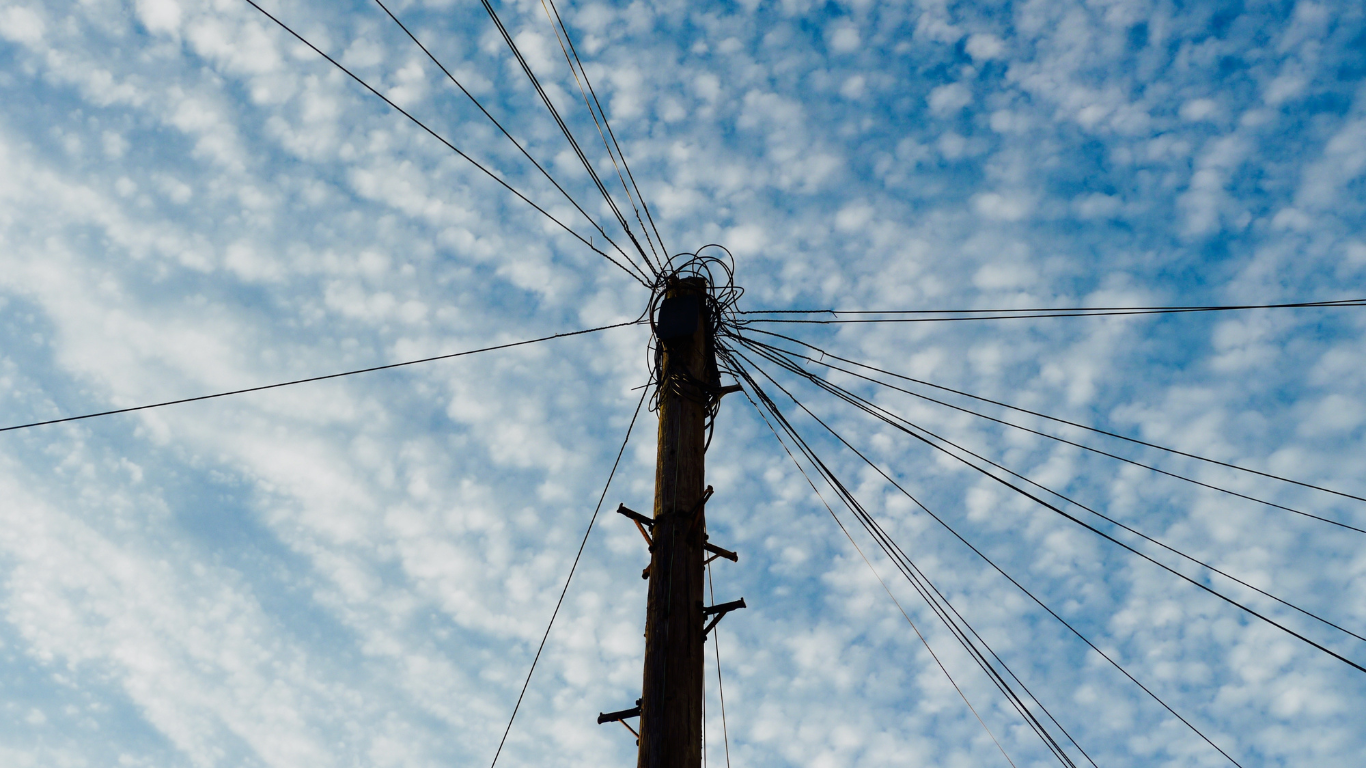Building a full fibre broadband network
Building full fibre broadband networks can take some time. Luckily, our expert team specialises in the design, installation, and delivery of state-of-the-art networks that stand the test of time.
When designing a network, we thoroughly survey the area to determine whether we can any existing infrastructure. The more we can use what’s already there, the better!
In some cases, the existing infrastructure isn’t viable for to use. This could be for a number of reasons, some of which include:
- Existing cables are directly buried (installed without PVC protective ducts)
- Existing ducts are blocked
- Existing chambers and ducts are at full capacity
Issues like these mean we have to think quickly and cleverly to create a design solution suitable to the area.
Using poles to enhance existing infrastructure for full fibre broadband
When coming up with a network design, we strive to reach as many properties as possible. If we can avoid it, we don’t want to leave behind anyone who wants full fibre broadband (especially when their next-door neighbour gets it, and they can’t).
To do this, we often need to dig new trenches or install telegraph poles. Pursuing an underground method is often preferred, as it doesn’t involve the use of poles or anything above ground. However, that same underground option can often be very costly and highly disruptive for residents.
Not only do we need to encroach on roads and pavements in local neighbourhoods, but also on private properties at times too. This is why installing poles in some situations is the most desirable option for all involved.
Three reasons why poles can be the best way to bring you full fibre
1. They’re efficient
Taking only a few hours to install, poles are a much faster way to bring you full fibre. This method ensures your new network will be ready as soon as possible!
On the other hand, going underground means digging up the earth, road, footpaths, and driveways. This can add months to your network build.
2. Much less disruptive
Installing poles means minimal community disruption, meanwhile digging underground requires heavy machinery, noise pollution and disrupted access to residential driveways over a prolonged period. To install fibre underground, we need to dig new trenches meaning road and path closures could be in place for months.
As we provide a fibre to the premise (FTTP) service, we may be required to excavate the property of those residents with an underground connection. With poles, this excavation and excessive road-works can be avoided.
Digging also poses a risk of cutting into other infrastructure underground (like gas or water pipes) that hasn’t been properly mapped out by the original installers. The overground alternative will minimise this risk and create a safer environment for surrounding homes.
3. Increased reach
As poles are a more efficient delivery method, they enable us to service more homes. Depending on the type, one pole can service as many as 26 properties.
For isolated properties, poles can make the difference between an area getting full fibre broadband or being left to wait years longer.
Working with our internet service provider for the best outcome
We build full fibre broadband networks on behalf of FACTCO, a Liverpool-based ISP. We work with them, and their build communities closely, and involve them with design decisions every step of the way.
We also do our best to minimise disruption to the community as much as possible, and always comply with Regulation 5 of the Electronic Communications Code (Conditions and Restriction) Regulations 2013.
Get connected to a full fibre broadband network
To see if your property can be connected to a network we’ve built for FACTCO, visit their website!
They offer ultrafast, reliable, and affordable packages to suit every household or business. You can find out more here.
Learn more about full fibre broadband
- Our networks are 100% full fibre, meaning customers receive a full fibre to the premises connection (FTTP), as opposed to the FTTC set up that’s in place (fibre to the cabinet). We bring fibre from the internet exchange, through the cabinet, and straight to your door. Read more.
- We’re work in various rural areas in the UK, including York, Cheshire, Durham, and Northumberland. Read more about our projects here.

